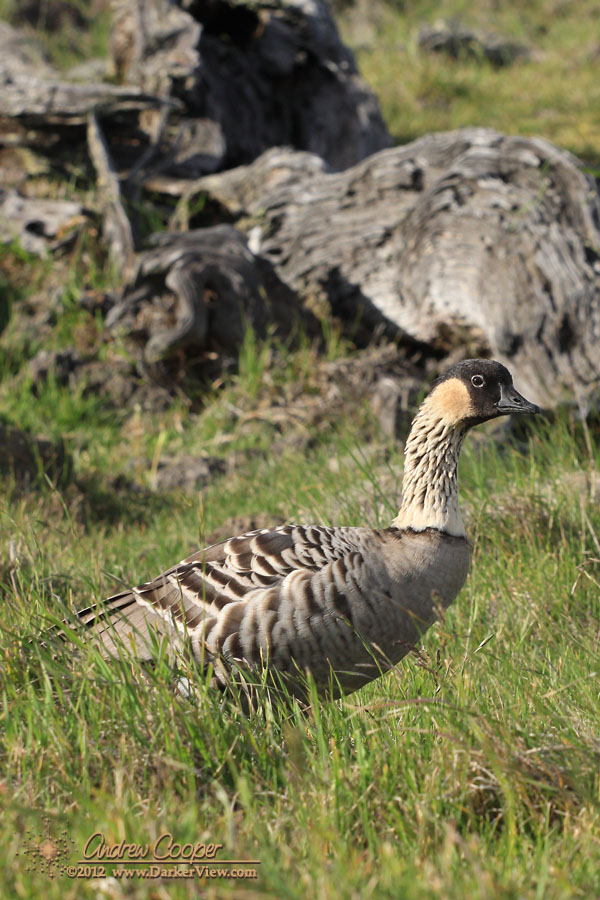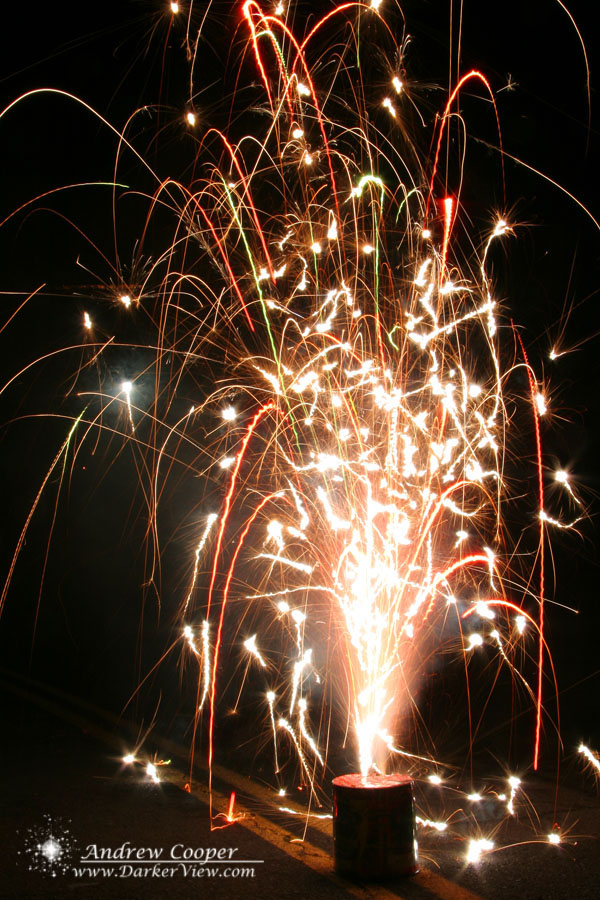
Category: Hawai’i
Exploring the islands
Ohia Forest
Three Dives on a Holiday Weekend
We managed three dives last weekend. It was a holiday weekend, Kamehameha Day, that helped. But still, we average a couple dives a month, three dives in a weekend was a bit unusual. We dove with some friends at Pukao on Saturday. Then two more on the following Monday. This was conservative, a few of the guys dove on Sunday too!
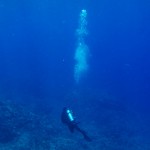
Thus, Monday morning saw us packing up the dive gear, a cooler with drinks and sandwich makings for everyone, and heading for Honokohau. There Deb and I joined Dennis and Mark for a very nice day diving.
We have been diving a lot in the NELHA area lately, I expect we will be diving some more there. It is some spectacular diving in the area. A rich reef sloping out to a steep drop-off that descends far beyond scuba depths. You look into the deep blue and know that somewhere down there is the abyssal plain, 8,000 feet below.
As usual I had my face in the coral, in and out of every crevice or small cave I came across. This is a great way to find the little stuff I love to photograph, but you can miss the big stuff… A series a sharp clangs gets my attention, the sound of Mark’s tank banger. I pull myself out of an alcove and swim over the large coral outcropping just in time to see a ten foot manta sweep by! The manta was just beyond the reef drop-off, against the deep blue of open water.
The find of the day was a Spanish Dancer, the largest nudibranch found in the islands. I do mean large, while most nudi’s I locate are an inch or two long, this fellow was the size of a dinner plate. Dancers have another feature… They Dance! Actually a form of swimming through undulating the body. I flushed him out of a crevice in the cave and the nudi proceeded to dance for us, everyone got a good look. After a few photos, actually quite a few photos, I carefully shepherded the pretty fellow back into the crevice I found him in.
No dives this weekend, I was on call. But we are already planning another outing next weekend. Summer diving season is here, bringing calm and clear water to the Kona side. The crew is ready to go, discussing where we will dive next.
Postcard from the Reef – Hydroid Stings
This is not a case of “I wish you were here”, but rather another lesson in the many hazards of diving.

I know when I got hit, a series of pricks down my left forearm. I didn’t even react, I was concentrating on the photo. I continued to brace myself against the surge by using the rocks of the cave floor. Those rocks were home to some little critters that had an issue with the disturbance I was creating… Hydroids.
Through the rest of the dive my arm continued to sting, discomfort that persisted but was not really all that bad. I took no action other than noting that I had gotten hit. It wasn’t until the next day that I realized that the stings were not going to go away quickly. I had a series of red welts across my forearm, and they itched. Time to break out the hydrocortisone cream. A week later the welts have faded and shrunk to pinpoints, no longer itch, but are still there.

Friday evening we stopped into the shop of Kohala Divers for a bit. There were a few folks we know in the shop as they were having an open house. As I chatted with Lina Preskitt, a local marine biologist, I mentioned the stings, showing her my forearm. She raised her forearm to display a very similar set of red welts on her left arm! We laughed as we looked at a mirror of almost identical stings.
This is the second time I have been seriously stung by hydroids. Will it stop me from diving? Not at all. Perhaps be a bit more careful when mucking about on a cave floor.
Postcard from Hawaii – Kaumana Cave
The Transit of Venus
We did the Transit of Venus right.
The plan was to stream the transit live from the summit. With access to the Keck facilities we had internet, a comfortable break room, and an excellent vantage point from which to view the entire transit. It sounded so easy at first, just put a camera on a telescope and connect it to the computer for the duration. Easy, in concept. The reality? Not so much.
It was an incredible amount of work. I had spent several days during the preceding weeks preparing the gear for transit. I admit some of that was fun, an excuse to get the gear out in the day and look at the Sun, even photograph Venus quite near the Sun.
The webcast team consisted of three people, Larry O’Hanlon, the Keck PIO, Mark Senft, a volunteer from our astronomy club, and myself. Larry and I met a HQ to begin our drive up the mountain at 8am.
At Hale Pohaku we picked up Mark and enjoyed breakfast. Here we found a massive buildup in progress, a gathering of troops… Visitor center staff, Hawai’i County police and fire, and the Mauna Kea Rangers, all present in force. Stephanie Nagata, the director of the Office of Mauna Kea Management helped man the roadblock. Stewart Hunter, the head of Mauna Kea Support Services with her in an orange vest. Their preparations looked to be necessary, three hours prior to first contact the crowds of transit tourists were already growing.
Continue reading “The Transit of Venus”JCMT and UKIRT Closing
Sad news that two of the telescopes atop Mauna Kea will be losing funding. Word comes from Tom on his blog Pacific View…
• extend operation of JCMT to end September 2014, to allow for completion of the agreed science programme for the SCUBA-2 instrument on the JCMT
• cease STFC support for the operation of UKIRT from end September 2013, a year after the completion of its current survey programme
These shutdowns have been threatened for some time. It is disheartening to learn that the worst outcome is now reality.
Nene
A Dark Night
Another new Moon weekend, another observing outing to Mauna Kea. With some shiny new astro equipment to play with I decided to load for photography instead of visual. Disassembling the photographic mount I realized it had not been taken apart in over two years, setup in the garage and used in the driveway. I did not expect to be alone, a few other local observers had indicated plans to get out this night.

As expected the Mauna Kea Visitor Information Station was a zoo. A dozen summit tour buses added to a heavy Saturday night crowd. The parking lot was full with even more cars parked along the road. Not a real problem, the tour buses use reserved spaces right in front of the building. They pull out about an hour before sunset, headed for the summit with their customers. We swoop in on the vacated parking spaces and set up our gear.
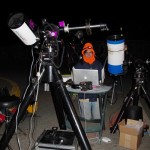
In addition to the VIS telescopes, there were quite a few local amateurs taking advantage of a moonless Saturday night. Cliff and Tony brought Cliff’s 24″ Dob, a two person job to move that ‘scope. Wayne brought photography gear. Mike was likewise set up for photography, planets instead of deep sky, using a Flea 3 and an ancient 10″ Celestron. Olivier brought his 19″ Pricilla, providing plenty of glass for visual astronomy while the cameras exposed for hours.
It was Malalo o Ka Po Lani, cultural night at the VIS, with a special lecture. This meant a large crowd, most of whom stayed to enjoy the perfect skies the mountain provided this night. They wandered around the telescopes asking lots of questions. While the photographic ‘scopes did not offer views through the eyepiece, there was still a lot of interest in the process. I chatted with many folks as I worked, fiddling with the complex equipment necessary to take photos of the sky.
It was quite the gathering of Losmandy G-11’s! Wayne brought two, Mike brought one to carry the old 10″ Celestron, I had mine setup for photography with the AT6RC. Add the three that the Mauna Kea VIS uses! A testament to these well-built mounts, some of which are two decades old.
The astrophoto gear was working nicely. There were a few issues to deal with at the beginning of the night, the usual new gear stuff. A few things I need to fix before next time… need to remount the guider so I can co-align it with the imaging ‘scope. I need to mount a real finder, and make it easier to hunt down the targets. But overall I was pleased, the new setup worked as I hoped it would.
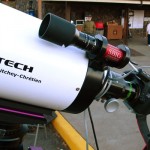
Another pleasant surprise was the ease of focusing with the AT6RC with a Bahtinov mask. I have been wondering about the stock focuser on the new ‘scope, how well does it handle the heavy DSLR camera. One lesson is that it locks the focus quite well, I noticed no drift each time I checked focus. Indeed, at one point I pulled out the 60D, swapped the focal reducer and adapter onto the 20Da and checked focus again, it was still perfect.
While my camera took exposure after exposure, I took in the views that big glass can produce. Bouncing back and forth between Cliff 24″ and Olivier’s 19″. No surprise for a spring session, galaxies were in rich supply. We viewed a lot of the showpiece objects, from Ursa Major to Virgo and Corvus.
This night was the type of night we hope for when planning an observing outing… Not too cold, no strong wind, and no clouds. Just a dark sky to delight the imagination all night long.
Viewing the Transit of Venus on Mauna Kea
Everyone is gearing up for the Transit of Venus. Starting at just after noon on June 5th, Venus will cross the face of the Sun. This will be our last chance to see such an event in our lifetimes, as a result, many skywatchers are making an extra effort to see this transit. This includes a number of folks who are traveling to Hawai’i this June, just to be here for the transit.
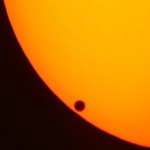
- The summit access road will be closed to public vehicular traffic at the Visitor Information Station.
- Access to the summit will be provided via free shuttle service between the Visitor Information Station (VIS) and Mauna Kea summit.
- Parking at the Visitor Information Station (VIS) is limited. Additional parking will be provided, however If parking spaces fill up, vehicles will be held below the VIS until parking becomes available.
- Mauna Kea Rangers and Hawaii County Police Officers will be present to assist with parking and public safety.
There will be solar telescopes stationed at the MKVIS, at the summit, and at a number of other locations around the island. With many options to choose from, you do not need to go to the summit to get at least some view of this event.
The diehards, those wanting to see the entire transit, will probably go to Mauna Kea. I really do not know what sort of crowd to expect on the mountain. While it could be substantial, I really expect a more modest showing than some folks are predicting. In any case it will be a fun event.
Myself? I will be on the summit. I will be running the Keck live webcast of the event using one of my telescopes. From a vantage point behind the Keck 1 telescope we should be in position to witness the entire event from start to finish.





